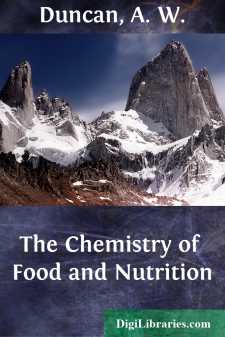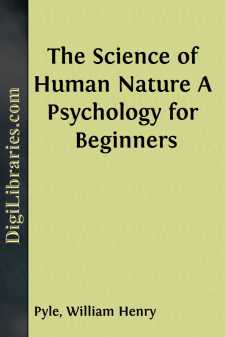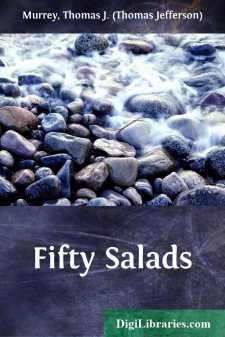Categories
- Antiques & Collectibles 13
- Architecture 36
- Art 48
- Bibles 22
- Biography & Autobiography 813
- Body, Mind & Spirit 142
- Business & Economics 28
- Children's Books 17
- Children's Fiction 14
- Computers 4
- Cooking 94
- Crafts & Hobbies 4
- Drama 346
- Education 46
- Family & Relationships 57
- Fiction 11829
- Games 19
- Gardening 17
- Health & Fitness 34
- History 1377
- House & Home 1
- Humor 147
- Juvenile Fiction 1873
- Juvenile Nonfiction 202
- Language Arts & Disciplines 88
- Law 16
- Literary Collections 686
- Literary Criticism 179
- Mathematics 13
- Medical 41
- Music 40
- Nature 179
- Non-Classifiable 1768
- Performing Arts 7
- Periodicals 1453
- Philosophy 64
- Photography 2
- Poetry 896
- Political Science 203
- Psychology 42
- Reference 154
- Religion 513
- Science 126
- Self-Help 84
- Social Science 81
- Sports & Recreation 34
- Study Aids 3
- Technology & Engineering 59
- Transportation 23
- Travel 463
- True Crime 29
The Chemistry of Food and Nutrition
by: A. W. Duncan
Categories:
Description:
Excerpt
The Chemistry of Food and Nutrition
By A.W. Duncan, F.C.S.
We may define a food to be any substance which will repair the functional waste of the body, increase its growth, or maintain the heat, muscular, and nervous energy. In its most comprehensive sense, the oxygen of the air is a food; as although it is admitted by the lungs, it passes into the blood, and there re-acts upon the other food which has passed through the stomach. It is usual, however, to restrict the term food to such nutriment as enters the body by the intestinal canal. Water is often spoken of as being distinct from food, but for this there is no sufficient reason.
Many popular writers have divided foods into flesh-formers, heat-givers, and bone-formers. Although attractive from its simplicity, this classification will not bear criticism. Flesh-formers are also heat-givers. Only a portion of the mineral matter goes to form bone.
Class I.—Inorganic Compounds.
Sub-class 1. Water. 2. Mineral Matter or Salts.
Class II—Organic Compounds.
1. Non-Nitrogeneous or Ternary Compounds. a Carbohydrates.
b Oils. c Organic Acids.
2. Nitrogenous Compounds. a Proteids. b Osseids.
Class III.—Non-Nutritives, Food Adjuncts and Drugs.
Essential Oils, Alkaloids, Extractives, Alcohol, &c.
These last are not strictly foods, if we keep to the definition already given; but they are consumed with the true foods or nutrients, comprised in the other two classes, and cannot well be excluded from consideration.
Water forms an essential part of all the tissues of the body. It is the solvent and carrier of other substances.
Mineral Matter or Salts, is left as an ash when food is thoroughly burnt. The most important salts are calcium phosphate, carbonate and fluoride, sodium chloride, potassium phosphate and chloride, and compounds of magnesium, iron and silicon.
Mineral matter is quite as necessary for plant as for animal life, and is therefore present in all food, except in the case of some highly-prepared ones, such as sugar, starch and oil. Children require a good proportion of calcium phosphate for the growth of their bones, whilst adults require less. The outer part of the grain of cereals is the richest in mineral constituents, white flour and rice are deficient. Wheatmeal and oatmeal are especially recommended for the quantity of phosphates and other salts contained in them. Mineral matter is necessary not only for the bones but for every tissue of the body.
When haricots are cooked, the liquid is often thrown away, and the beans served nearly dry, or with parsley or other sauce. Not only is the food less tasty but important saline constituents are lost. The author has made the following experiments:—German whole lentils, Egyptian split red lentils and medium haricot beans were soaked all night (16 hours) in just sufficient cold water to keep them covered. The water was poured off and evaporated, the residue heated in the steam-oven to perfect dryness and weighed. After pouring off the water, the haricots were boiled in more water until thoroughly cooked, the liquid being kept as low as possible....












